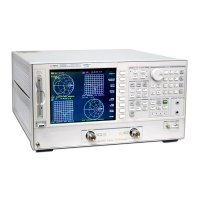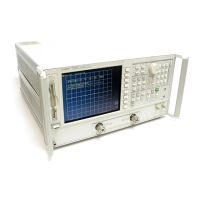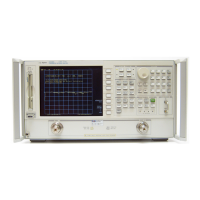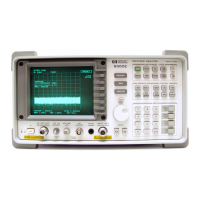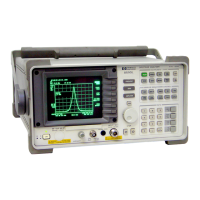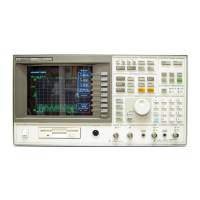5-35
Hardkey/Softkey Reference
Analyzer Functions
turns on marker 2 and makes it the active marker. If
another marker is present, that marker becomes inactive
and is represented on the display as ∆.
turns on marker 3 and makes it the active marker.
turns on marker 4 and makes it the active marker.
turns on marker 5 and makes it the active marker.
turns off all the markers and the delta reference marker,
as well as the tracking and bandwidth functions that are
accessed with the key.
key activates a marker if one is not already active, and
provides access to additional marker functions. These can
be used to quickly change the measurement parameters,
to search the trace for specified information, and to
analyze the trace statistically.
provides access to the marker mode menu, where several
marker modes can be selected including special markers
for polar and Smith chart formats.
allows user to turn tracking on, off and search for the
maximum, minimum, and target points on the trace.
located under the key, interpolates between
measured points to allow the markers to be placed at any
point on the trace. Displayed marker values are also
interpolated. This is the default marker mode.
couples the marker stimulus values for the two display
channels. Even if the stimulus is uncoupled and two sets
of stimulus values are shown, the markers track the same
stimulus values on each channel as long as they are within
the displayed stimulus range.
places markers only on measured trace points determined
by the stimulus settings.
allows the marker stimulus values to be controlled
independently on each channel.
moves the active marker to the maximum point on the
trace.
sets the maximum bandwidth value of the bandwidth test
limits.
Marker Fctn
Marker Search
Marker
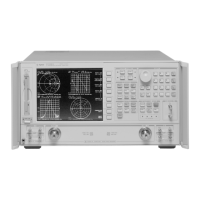
